Quick Info
- Windows does not have a built-in feature that lets you change the system font directly.
- To change the default system font, you will need to rely on a registry hack.
- Changing the default system font in this manner may not work for all fonts and may cause functionality issues.
- You can restore the default system font at any time by editing the same registry file you used for changing it.
- Open the Settings app and click on the 'Personalization' option on the left.

- On the Personalization page, click on the 'Fonts' option.
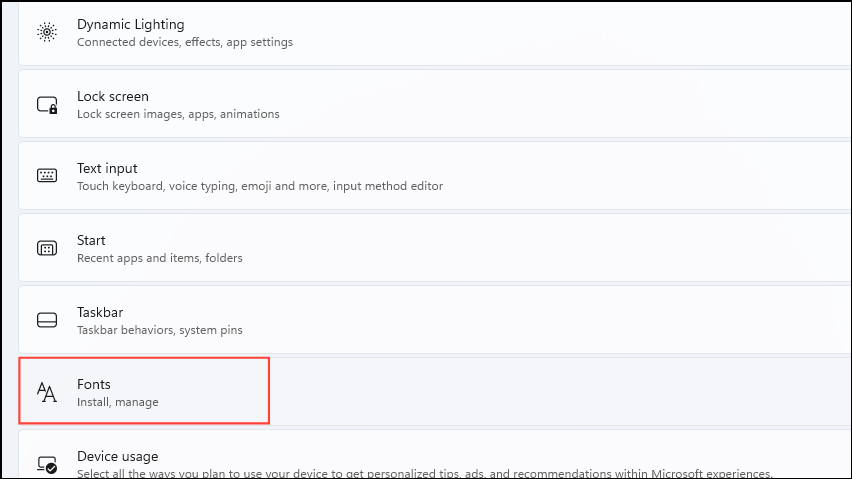
- You will see the available fonts on your system now. Click on the one you want to set as the default system font.
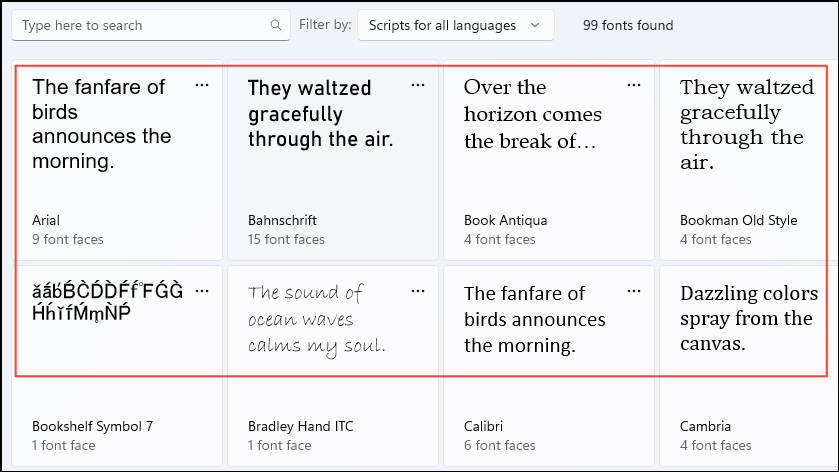
- When you click on a font, you can see its full name, which you will need when creating a registry hack to set it as the default font.
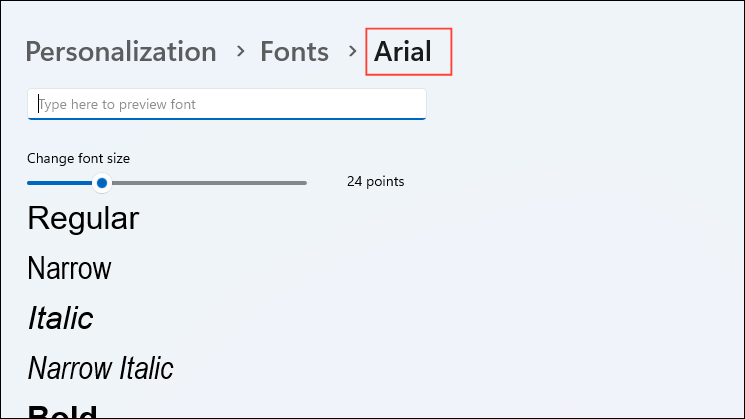
- Now open Notepad and paste the following code inside:
Windows Registry Editor Version 5.00
[HKEY_LOCAL_MACHINE\SOFTWARE\Microsoft\Windows NT\CurrentVersion\Fonts]
"Segoe UI (TrueType)"=""
"Segoe UI Bold (TrueType)"=""
"Segoe UI Bold Italic (TrueType)"=""
"Segoe UI Italic (TrueType)"=""
"Segoe UI Light (TrueType)"=""
"Segoe UI Semibold (TrueType)"=""
"Segoe UI Symbol (TrueType)"=""
[HKEY_LOCAL_MACHINE\SOFTWARE\Microsoft\Windows NT\CurrentVersion\FontSubstitutes]
"Segoe UI"="NEW-FONT"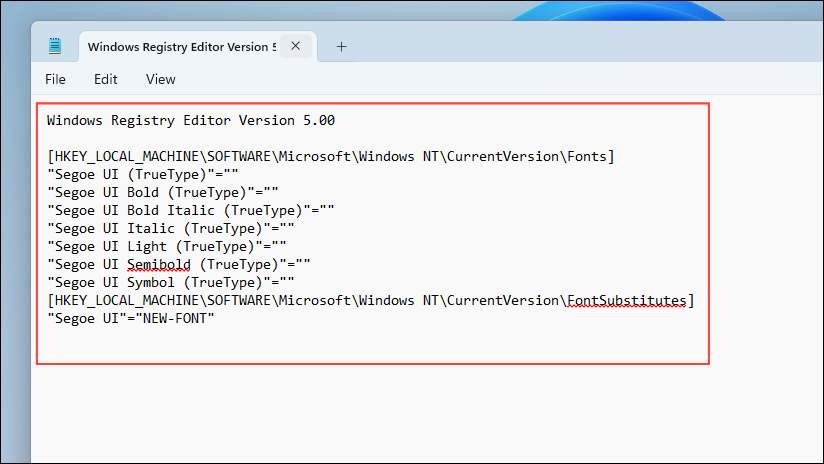
- Replace the 'NEW-FONT' in the last line of the code with the name of the font you want to set as the default one.

- Save the notepad file with the
.regextension.

- Now go to the location where you have saved the file, right-click on it, and then click on 'Merge'.
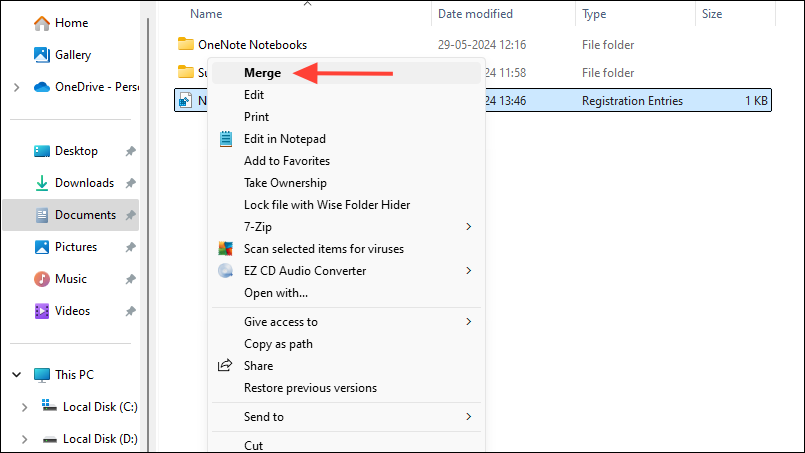
- Click on the 'Yes' button in the pop-up that appears and you will be notified that the registry values have been added to the registry. Finally, restart your PC and you will see the new font as the default on your system.
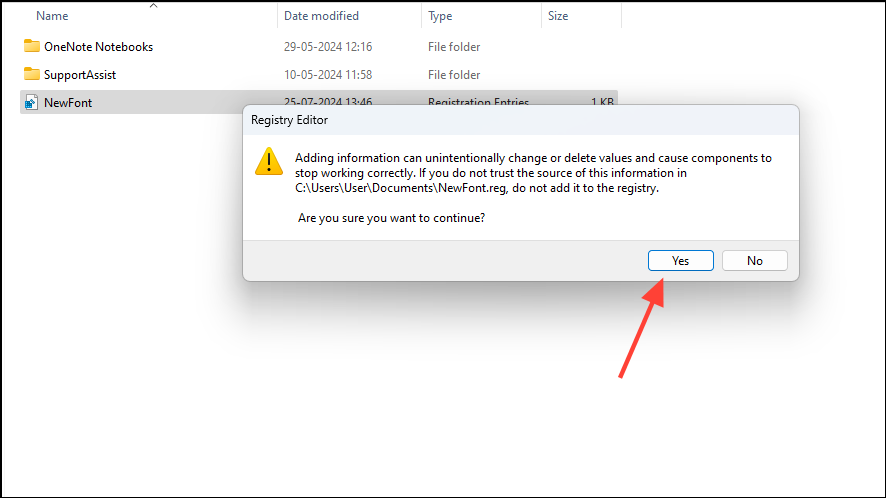
- If you wish to change the system font at any time, simply open the .reg file you created and replace the name of the font in the last line. Similarly, to restore the default font, replace the font name with 'Segoe UI'.
Note: Changing the default font on Windows can sometimes cause issues, such as missing UI elements and functionality.
Things to know:
- The method described here lets you change the default system font, which means the new font will be visible across the entire OS.
- You can also try out fonts other than those in the Windows Fonts library by downloading them from the internet.
- Many programs have their own settings allowing users to customize their fonts in that program, irrespective of the default system font.
- On the other hand, you may also be able to use Windows fonts in certain applications if they support them.


